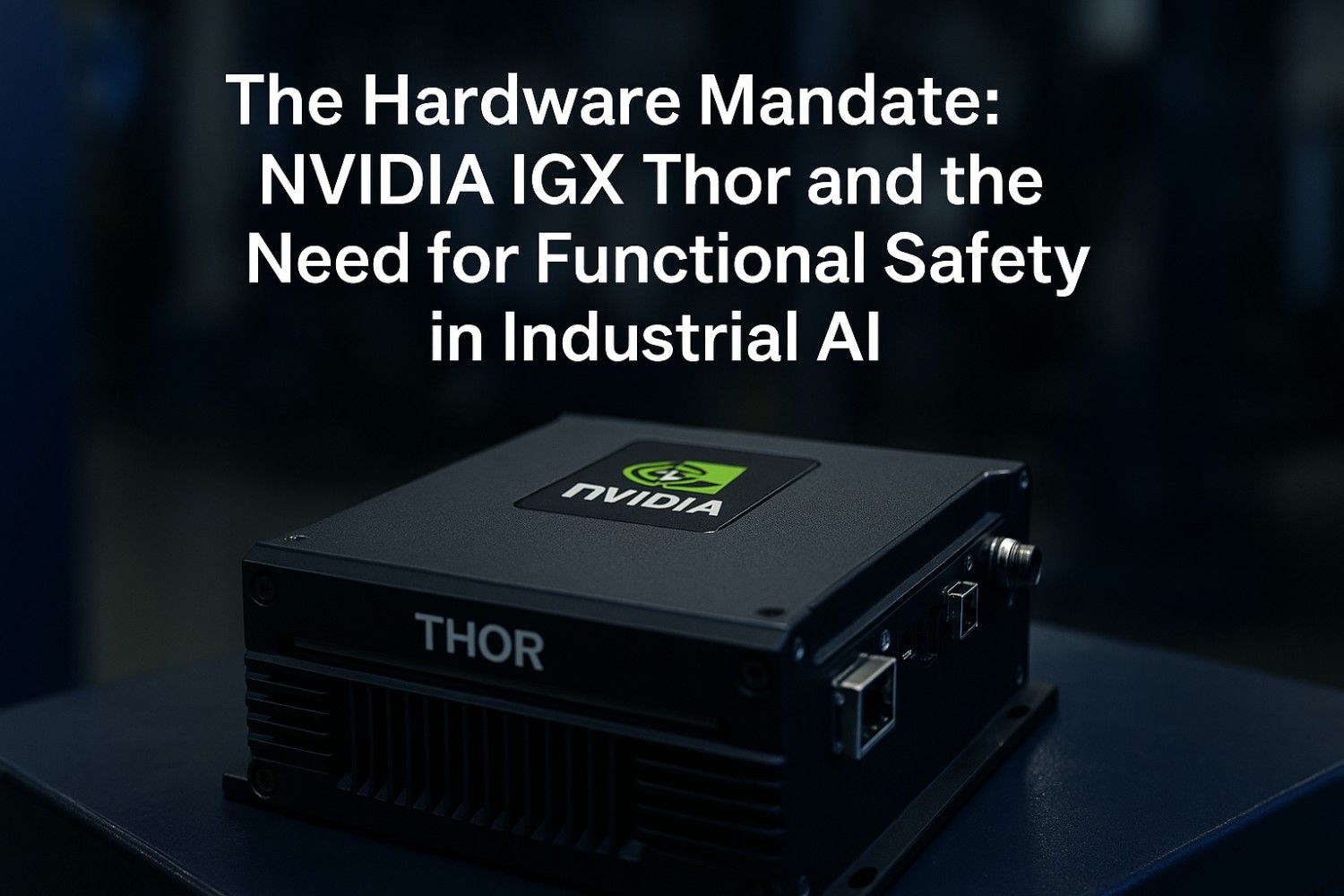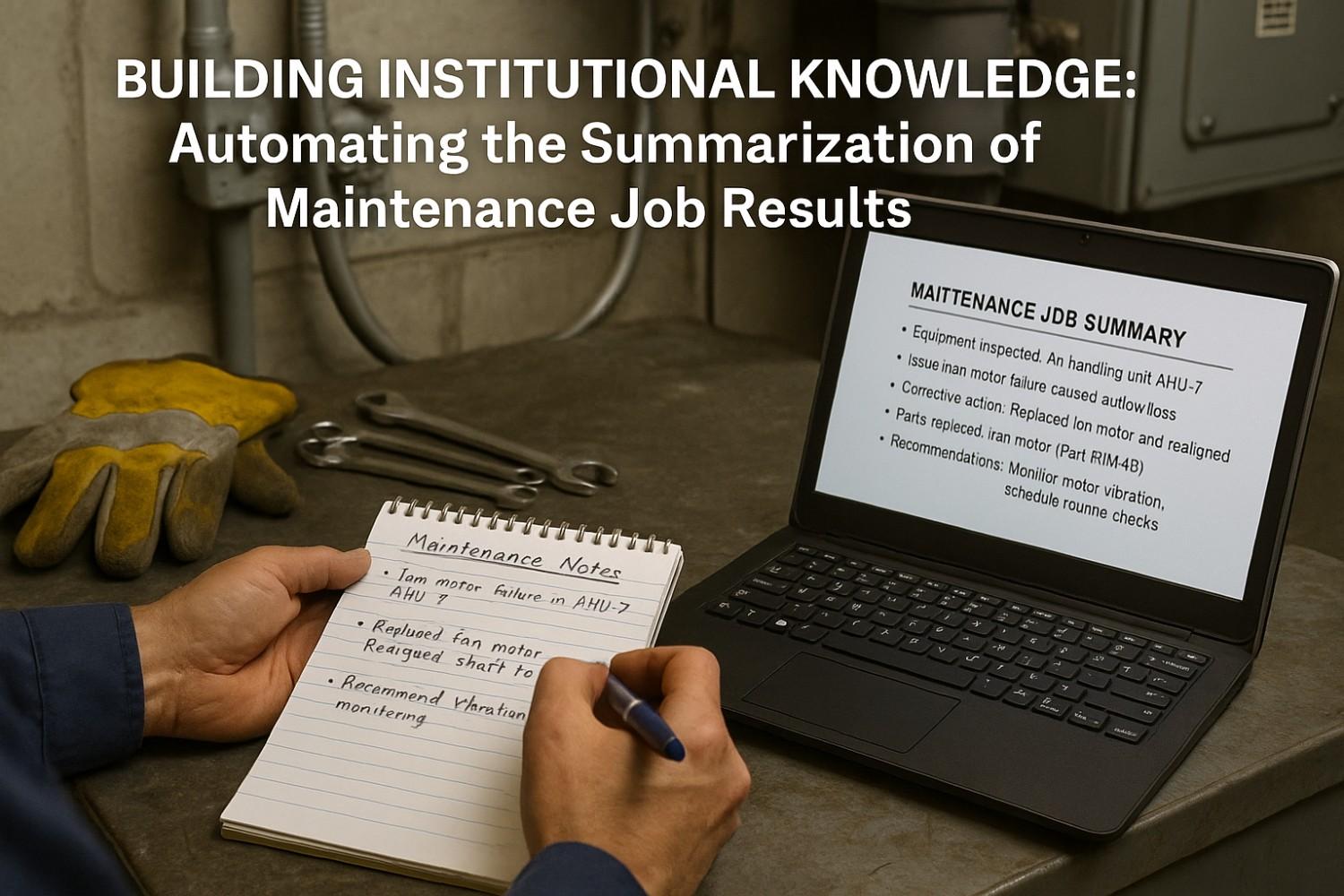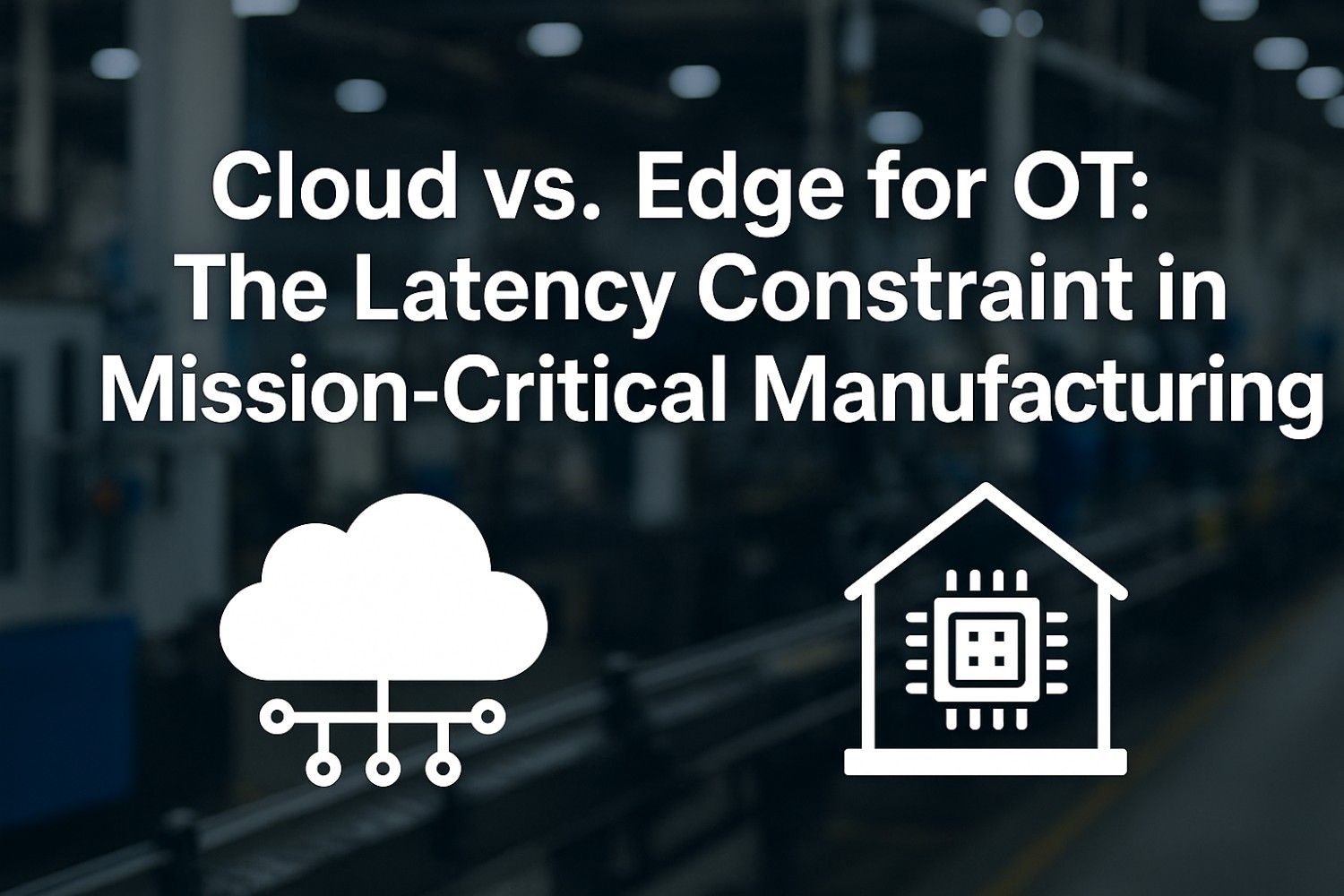Your facilities manager receives the urgent email at 6:23 AM from IT: "The AI server crashed overnight—graphics card failed after 18 months, no replacement parts available, manufacturer discontinued the model." You check the deployment plan—this consumer-grade GPU running your predictive maintenance system was supposed to last 5+ years, but the vendor stopped production after 14 months following normal product cycles. Your $380,000 AI implementation now requires complete hardware replacement because nobody considered that industrial maintenance systems demand 10-year operational lifecycles matching equipment replacement schedules, not 18-month consumer electronics refresh cycles. Without industrial-grade hardware designed for decade-long deployments with guaranteed parts availability and functional safety certifications, your AI investment becomes disposable technology incompatible with industrial asset management timelines.
This hardware mismatch crisis confronts American manufacturing facilities as operations deploy AI systems on consumer computing platforms never designed for harsh industrial environments, 24/7 operation, or multi-year support commitments. The average predictive maintenance AI implementation uses gaming or data center GPUs optimized for air-conditioned offices with 18-36 month product lifecycles, creating inevitable obsolescence crises when industrial facilities require decade-long operational reliability matching production equipment lifecycles.
Facilities implementing industrial-grade GPU platforms with 10-year lifecycle commitments achieve 95%+ hardware availability compared to 60-75% for consumer solutions while eliminating unexpected replacement costs averaging $50,000-150,000 per failure. The transformation lies in deploying purpose-built industrial computing platforms like NVIDIA IGX Thor—engineered specifically for factory floor environments with functional safety certifications, extended temperature ranges, vibration resistance, and guaranteed long-term support matching industrial asset management requirements.
Your maintenance AI won't work reliably on consumer GPUs—see why industrial-grade hardware is mandatory!
Consumer gaming and data center GPUs fail within 18-36 months in industrial environments, creating unexpected replacement costs and system downtime destroying AI ROI. Discover why NVIDIA IGX Thor and other industrial-grade platforms provide 10-year lifecycle support, functional safety certifications (IEC 61508 SIL 2), extended temperature ranges (-40°C to +85°C), and 24/7 operational reliability matching industrial asset management timelines. See the hardware specifications, lifecycle cost comparisons, and reliability standards your maintenance AI requires for decade-long deployments.
Why Consumer Tech GPUs Won't Work for Maintenance AI
Consumer and data center GPUs dominate AI development because they offer exceptional computational performance at attractive price points, but these platforms fundamentally misalign with industrial operational requirements around lifecycle management, environmental resilience, and long-term support commitments. Gaming GPUs optimize for 18-24 month product cycles matching consumer electronics refresh patterns. Data center GPUs target 3-4 year server replacement schedules common in enterprise IT. Neither category addresses industrial facilities requiring 10+ year operational lifecycles matching production equipment replacement timelines.
The product lifecycle mismatch creates inevitable obsolescence crises. When consumer GPU manufacturers discontinue products after 18-36 months—normal practice for fast-moving consumer electronics—industrial facilities lose access to replacement parts, driver updates, and technical support years before planned equipment refreshes. A predictive maintenance system deployed in 2024 using consumer GPUs will likely face hardware obsolescence by 2026, requiring complete system replacement mid-lifecycle at unplanned costs of $50,000-150,000 per installation.
Lifecycle Mismatch
Consumer GPUs: 18-36 month product lifecycles. Industrial equipment: 10-15 year operational lifecycles. This fundamental misalignment guarantees mid-lifecycle obsolescence requiring unplanned hardware replacement and system re-qualification.
Environmental Unsuitability
Consumer GPUs specify 0°C to 40°C operating ranges in clean, climate-controlled environments. Factory floors experience -20°C to 60°C extremes, dust, vibration, humidity causing premature failures within 12-24 months.
Reliability Standards Gap
Gaming GPUs target 95%+ availability during warranty periods (1-3 years). Industrial systems require 99.9%+ uptime across 10-year lifecycles with functional safety certifications (IEC 61508 SIL 2) for critical applications.
Support Termination Risk
Consumer GPU manufacturers discontinue driver updates, firmware patches, and technical support 18-36 months post-launch. Industrial deployments require decade-long support matching operational lifecycles and regulatory compliance periods.
Environmental conditions on factory floors exceed consumer GPU specifications by wide margins. Manufacturing environments commonly experience temperature extremes (-20°C to 60°C), high humidity (85%+ RH), dust and particulate contamination, mechanical vibration from equipment operation, and electromagnetic interference from high-power machinery. Consumer GPUs designed for climate-controlled offices with filtered air and stable power fail rapidly under these conditions, with median time to failure dropping from 5-7 years (office conditions) to 18-36 months (industrial environments).
Functional Safety Standards for Industrial Hardware
Functional safety represents a critical requirement for industrial computing systems where hardware or software failures could result in equipment damage, production losses, or personnel injury. International standards like IEC 61508 (industrial electrical/electronic systems) and ISO 13849 (machinery safety) establish systematic approaches to achieving acceptable risk levels through hardware reliability, software quality, and fault detection mechanisms. AI systems influencing maintenance decisions or controlling equipment operations must meet these functional safety requirements to gain regulatory approval and insurance coverage.
IEC 61508 defines Safety Integrity Levels (SIL) ranging from SIL 1 (lowest) to SIL 4 (highest) based on risk reduction requirements. Most industrial AI applications require SIL 2 certification, demanding hardware failure rates below 10^-7 dangerous failures per hour and systematic approaches to fault detection, redundancy, and fail-safe operation. Achieving SIL 2 requires industrial-grade components designed with functional safety from inception—consumer GPUs lacking these design principles cannot be retrofitted to meet safety standards regardless of software quality.
| Safety Requirement | Consumer GPU | Industrial GPU (IGX Thor) | Compliance Impact |
|---|---|---|---|
| IEC 61508 SIL Rating | Not certified | SIL 2 certified | Required for critical systems |
| Fault Detection Coverage | No systematic approach | >90% fault detection | Mandatory for safety functions |
| Hardware Fault Tolerance | Single point failures | Redundant subsystems | Prevents dangerous failures |
| Mean Time Between Failures | 3-5 years (office) | 20+ years (industrial) | Determines maintenance intervals |
| Environmental Operating Range | 0°C to 40°C | -40°C to +85°C | Enables factory floor deployment |
| Vibration Resistance | Not specified | IEC 60068-2-64 certified | Withstands machinery vibration |
Hardware fault tolerance mechanisms distinguish industrial from consumer platforms through redundant power supplies, error-correcting memory (ECC), watchdog timers, and fail-safe states ensuring predictable behavior during component failures. When power supplies fail in consumer systems, unpredictable crashes occur potentially corrupting data or issuing incorrect commands. Industrial platforms detect power failures within microseconds, safely shutting down or transferring to backup supplies while maintaining system integrity and logging fault details for maintenance action.
Documentation and traceability requirements for functional safety extend beyond technical specifications to comprehensive safety lifecycle documentation. IEC 61508 requires hazard analysis, risk assessment, safety requirements specifications, design documentation, verification and validation records, and operational procedures. Consumer GPU manufacturers provide minimal documentation focused on performance specifications. Industrial platforms include complete safety documentation enabling regulatory compliance, insurance approval, and legal liability protection when AI systems influence critical operations.
10-Year Lifecycle Commitment Requirements
Industrial asset management operates on decade-long timelines where production equipment receives 10-15 year depreciation schedules, maintenance systems must support equipment throughout operational lifecycles, and facility managers avoid mid-lifecycle technology replacements disrupting production and consuming unplanned capital. AI systems deployed for predictive maintenance, quality monitoring, or process optimization must align with these industrial timelines rather than consumer electronics refresh cycles to deliver sustainable ROI and operational stability.
Long-term support commitments differentiate industrial computing platforms through guaranteed parts availability, driver and firmware updates, security patches, and technical support extending 10+ years from initial deployment. When NVIDIA commits to 10-year support for IGX Thor, this legally binding commitment ensures facilities can obtain replacement components, receive security updates addressing emerging threats, and access technical expertise throughout equipment operational lifecycles. Consumer GPU manufacturers provide no such commitments, typically ending support 18-36 months after product launch.
10-Year Lifecycle Cost Comparison
The hidden costs of consumer hardware in industrial deployments compound beyond direct replacement expenses. Each hardware refresh requires software re-qualification validating that AI models perform identically on new hardware—a process consuming 2-4 weeks and $30,000-60,000 in engineering costs per replacement. Regulatory compliance documentation must be updated and re-submitted. Insurance approvals require re-certification. Training materials need revision. These indirect costs often exceed direct hardware expenses, making consumer GPU "savings" illusory when analyzing total lifecycle costs.
Industrial GPU Lifecycle Advantages
- 10-year guaranteed parts availability eliminating obsolescence risks and enabling long-term spare parts inventory planning
- Continuous driver and firmware updates addressing security vulnerabilities and maintaining compatibility with evolving software stacks
- Extended warranty and support options providing predictable lifecycle costs without surprise replacement expenses
- Hot-swappable components enabling maintenance without production shutdowns, maintaining 24/7 operational requirements
- Backward compatibility across hardware revisions preventing forced software upgrades when replacing failed components
- Technical documentation maintained throughout lifecycle supporting troubleshooting, maintenance, and regulatory compliance
- Qualification testing and certification remaining valid across component replacements within product families
- Predictable refresh cycles aligning with capital budgeting processes and equipment depreciation schedules
Capital budgeting processes in industrial environments demand predictable multi-year expenses rather than surprise mid-lifecycle replacements. When facilities budget $75,000 for AI hardware with 10-year depreciation, consumer GPUs requiring 3-4 replacements at unplanned intervals create budget overruns and approval delays. Industrial platforms with guaranteed 10-year lifecycles align with capital planning processes, enabling proper depreciation accounting and avoiding unplanned expenses that disrupt facility operations and financial management.
NVIDIA IGX Thor: Purpose-Built for Factory Floor
NVIDIA IGX Thor represents purpose-built industrial computing platforms engineered specifically for AI deployments in harsh manufacturing environments with functional safety, extended lifecycles, and real-time processing requirements consumer platforms cannot address. Built on NVIDIA Grace Hopper architecture combining ARM-based CPUs with latest-generation GPUs, IGX Thor delivers 2000 TOPS (trillion operations per second) AI performance while maintaining IEC 61508 SIL 2 functional safety certification and industrial environmental specifications.
The architecture integrates multiple safety features unavailable in consumer platforms. Redundant processing cores enable fault detection and recovery without system shutdown. Error-correcting memory (ECC) prevents data corruption from radiation events or electrical noise common in industrial environments. Lockstep execution compares outputs from redundant computational paths detecting single-event upsets before they propagate through systems. Watchdog timers reset stuck processes preventing deadlocks. These safety mechanisms achieve <10^-7 dangerous failure rates required for SIL 2 certification.
NVIDIA IGX Thor Key Specifications
- 2000 TOPS AI inference performance supporting real-time LLM processing for maintenance analysis and work order generation
- IEC 61508 SIL 2 functional safety certification enabling deployment in critical maintenance and control applications
- Extended temperature range: -40°C to +85°C operation supporting factory floor deployment without specialized enclosures
- 10-year lifecycle support commitment with guaranteed parts availability, driver updates, and technical assistance
- Vibration and shock resistance: IEC 60068-2-64 certified withstanding machinery vibration and handling impacts
- Multiple form factors: box PC, rackmount, and panel PC configurations supporting diverse installation requirements
- Redundant power supplies and hot-swappable components enabling maintenance without system shutdown
- Real-time operating system support: Linux RT, QNX, and other RTOS enabling deterministic processing for time-critical applications
Performance specifications address real-time processing requirements industrial AI applications demand. Maintenance AI systems must analyze sensor streams continuously, detect anomalies within seconds, generate work orders instantly, and provide recommendations before conditions deteriorate. IGX Thor's 2000 TOPS performance enables processing thousands of sensor channels simultaneously while running large language models for contextual analysis—delivering complete AI pipelines from sensor to actionable insight in under 15 seconds compared to 2-5 minutes for lower-performance platforms.
Edge deployment capabilities prove particularly valuable for distributed manufacturing operations where connectivity limitations or data sovereignty requirements mandate local processing. IGX Thor operates standalone without cloud dependencies, processing all AI workloads on-premise while maintaining full functionality during network outages. This architecture addresses regulatory requirements (ITAR, CMMC), eliminates cloud subscription costs, reduces latency by 95%+, and ensures operational continuity regardless of external connectivity.
Alternative industrial computing platforms including Advantech MIC series, Siemens SIMATIC IPC, and Beckhoff embedded PCs provide similar industrial-grade capabilities with varying performance levels, safety certifications, and ecosystem support. Platform selection depends on specific application requirements—pure inference workloads may use lower-cost Advantech systems, while applications requiring both training and inference benefit from IGX Thor's superior performance. The key principle remains consistent: industrial applications demand industrial-grade hardware regardless of specific vendor selection.
Ensuring AI Infrastructure Reliability
Comprehensive AI infrastructure reliability extends beyond hardware selection to system architecture, maintenance strategies, and operational procedures ensuring 24/7 availability matching industrial uptime requirements. High-availability architectures employ redundancy at multiple levels—redundant hardware components, clustered computing nodes, diverse network paths, backup power systems—eliminating single points of failure that would compromise AI operations during component failures.
Predictive maintenance for AI infrastructure represents an often-overlooked requirement. Just as AI systems monitor production equipment for developing problems, the AI infrastructure itself requires continuous health monitoring detecting hardware degradation before failures occur. Modern industrial computing platforms provide comprehensive diagnostic capabilities monitoring component temperatures, power supply voltages, memory error rates, storage device health, and network performance—enabling proactive replacement of degrading components during planned maintenance windows rather than emergency responses to unexpected failures.
AI Infrastructure Reliability Strategies
- Hot-standby redundancy with automatic failover ensuring continued operations during primary system failures
- Distributed processing architectures spreading workloads across multiple nodes preventing single-system failures from compromising facility-wide AI capabilities
- Continuous hardware health monitoring detecting component degradation 30-60 days before failures enabling proactive replacement
- Staged software updates deploying to redundant systems first, validating stability before production rollout
- Environmental monitoring systems tracking temperature, humidity, and power quality alerting to conditions threatening hardware reliability
- Spare parts inventory management maintaining critical components on-site preventing extended downtime waiting for emergency shipments
- Documented maintenance procedures establishing regular inspection schedules, cleaning protocols, and component replacement intervals
- Disaster recovery planning including full system backups, recovery procedures, and tested restoration processes
Environmental control for computing infrastructure proves critical despite industrial-grade hardware environmental ratings. While IGX Thor operates across -40°C to +85°C, maintaining stable moderate temperatures (20-25°C) dramatically extends component lifecycles and improves reliability. Proper enclosures provide dust filtration protecting against particulate contamination, vibration isolation preventing mechanical stress on circuit boards, and humidity control avoiding condensation and corrosion. Investment in proper environmental control systems pays dividends through extended hardware lifecycles and reduced failure rates.
Operational procedures governing AI system maintenance require integration with facility-wide maintenance management systems. AI infrastructure should receive the same systematic maintenance attention as production equipment—scheduled inspections, preventive component replacement, performance validation, and documentation maintenance. When AI systems generate work orders for production equipment maintenance, the irony of neglecting AI infrastructure maintenance becomes apparent. Systematic approaches treating AI systems as critical facility assets rather than IT equipment ensure long-term reliability.
Conclusion
Industrial AI deployment success depends fundamentally on hardware platform selection aligned with industrial operational requirements rather than consumer electronics or data center IT norms. Consumer and gaming GPUs optimize for short product lifecycles (18-36 months), climate-controlled environments, and performance over reliability—creating inevitable obsolescence crises when deployed in industrial facilities requiring decade-long operational lifecycles, harsh environmental conditions, and functional safety certifications for critical systems.
Functional safety standards like IEC 61508 establish systematic requirements for hardware reliability, fault detection, and fail-safe operation essential for AI systems influencing maintenance decisions or controlling equipment. Achieving SIL 2 certification requires industrial-grade platforms designed with safety from inception—fault-tolerant architectures, redundant subsystems, error-correcting memory, and comprehensive diagnostics. Consumer hardware lacking these design principles cannot be retrofitted to meet safety standards regardless of software quality, limiting deployment to non-critical applications.
Long-term support commitments differentiate industrial platforms through guaranteed 10-year parts availability, continuous driver updates, security patches, and technical assistance. Consumer GPU manufacturers provide no such commitments, typically ending support 18-36 months post-launch creating mid-lifecycle obsolescence requiring unplanned replacements. Total 10-year cost of ownership for consumer GPUs reaches $180,000-320,000 including multiple replacements, re-qualification costs, and production disruption compared to $75,000-110,000 for industrial platforms—60-70% lower despite higher initial investment.
NVIDIA IGX Thor represents purpose-built industrial platforms engineered specifically for AI deployments in manufacturing environments. The architecture delivers 2000 TOPS performance enabling real-time LLM processing while maintaining functional safety certification, extended temperature range operation, vibration resistance, and redundant safety features. Edge deployment capabilities eliminate cloud dependencies, address data sovereignty requirements, and ensure operational continuity during network outages. Alternative industrial platforms from Advantech, Siemens, and Beckhoff provide similar capabilities at varying performance and cost points.
Comprehensive AI infrastructure reliability requires system architectures, maintenance strategies, and operational procedures ensuring 24/7 availability. High-availability designs employ redundant components, clustered computing nodes, and automatic failover mechanisms. Predictive maintenance for AI infrastructure prevents failures through continuous health monitoring. Environmental control systems extend component lifecycles despite industrial environmental ratings. Operational procedures integrate AI infrastructure into facility-wide maintenance management ensuring systematic attention matching critical production equipment.
Hardware platform selection determines industrial AI long-term viability more than algorithm sophistication or software quality. Organizations deploying consumer hardware to reduce initial costs face inevitable mid-lifecycle obsolescence, environmental failures, and absence of functional safety certification limiting applications to non-critical monitoring. Facilities investing in proper industrial-grade platforms achieve lower total cost of ownership, regulatory compliance, and operational reliability supporting critical maintenance and control applications throughout decade-long facility lifecycles.
Choose industrial-grade hardware for long-term AI reliability—learn why NVIDIA IGX Thor and functional safety certification are mandatory!
Join Oxmaint Inc. for a comprehensive technical workshop examining industrial GPU requirements, functional safety standards, and 10-year lifecycle cost analysis. See detailed specifications for NVIDIA IGX Thor including 2000 TOPS performance, IEC 61508 SIL 2 certification, extended temperature range (-40°C to +85°C), and vibration resistance. Compare total cost of ownership across consumer and industrial platforms demonstrating 60-70% lifecycle savings despite higher initial investment. Learn why consumer GPUs fail within 18-36 months in industrial environments while purpose-built platforms deliver decade-long reliability.
What You'll Learn: Industrial vs consumer GPU reliability comparison • IEC 61508 functional safety requirements and certification process • 10-year lifecycle cost analysis with detailed TCO calculator • NVIDIA IGX Thor specifications and performance benchmarks • Environmental requirements for factory floor deployment • Redundancy and high-availability architecture patterns • Maintenance strategies for AI infrastructure reliability • Real-world deployment case studies and ROI analysis.
Essential for facility managers, IT/OT engineers, capital planning directors, and manufacturing technology leaders making hardware investment decisions. Download free comparison chart and TCO calculator.







.jpeg)

